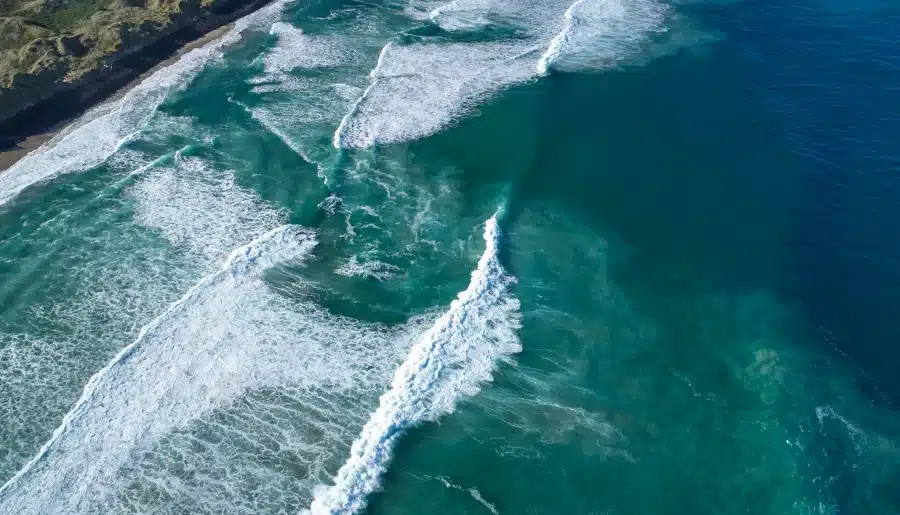Every year, there are many reports about accidents in rip currents caused by high tides, especially during upcoming holiday weekends and summer. This just shows how dangerous they are for beachgoers.
Now, you might ask, “But what is a rip current?”
Rip currents are strong, narrow channels of fast-moving water that can pull swimmers away from the shore.
They are formed when waves hit the beach in a way that creates a current flowing away from the shore. This happens when waves move from deep to shallow water and are influenced by the shape of the ocean floor. Sometimes, waves interacting with each other can also cause rip currents for a short period.
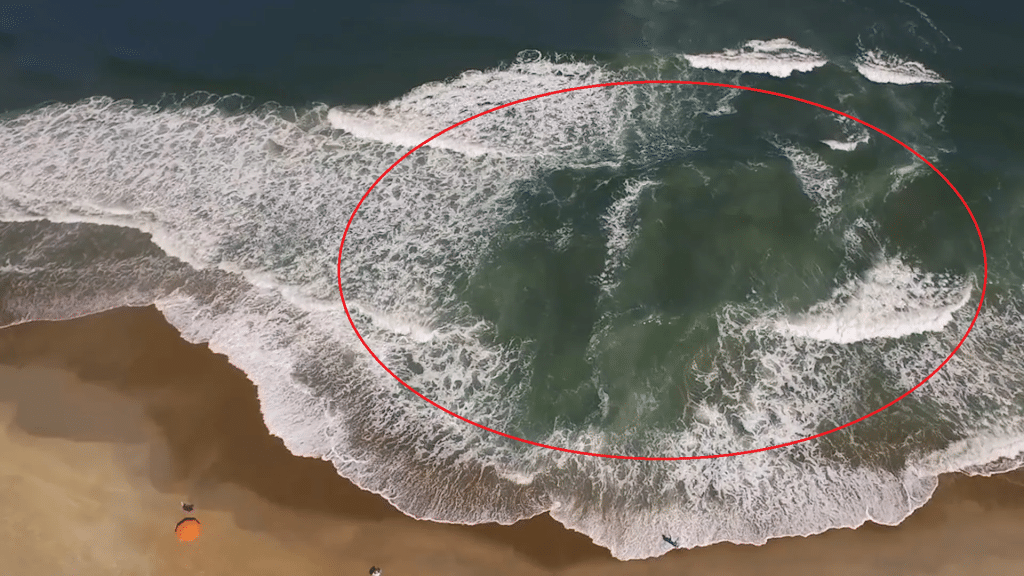
Rip currents are dangerous because they’re strong enough to catch good swimmers by surprise and cause a lot of drownings each year.
Did you know that around 100 people drown in rip currents in the U.S. every year? Lifeguards in the U.S. save about 30,000 swimmers from rip currents each year.
This is why it’s important to recognize and escape rip currents to ensure the safety of both yourself and others.
Here are some key tips for staying safe and being prepared to handle rip currents effectively.
Now, How Can You Spot A Rip Current?
Rip currents are often formed near the shoreline where the ocean floor is lower, or there are breaks between sandbars and near structures like jetties and piers.
These currents can range from 50 to 300 feet wide and be challenging to spot.
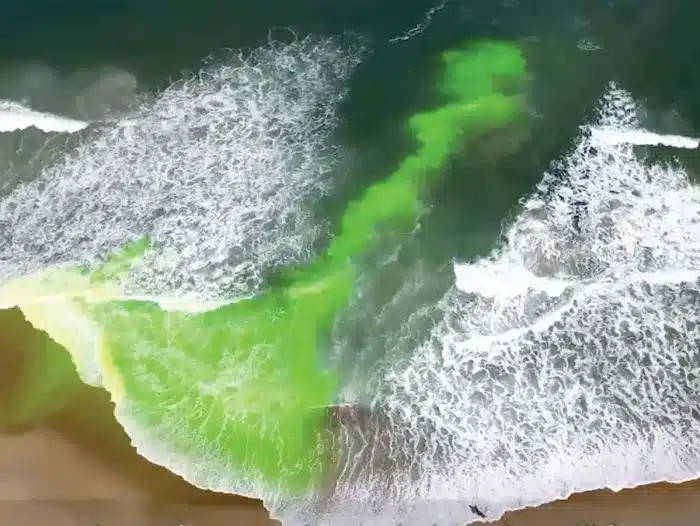
However, you can watch for signs such as:
- The surrounding water is calm
- Discolored water is caused by stirred sand
- Foam, bubbles, or debris moving out to sea
- Waves break on the sides but not in the middle of the current
When planning a trip to the beach, it’s important to stay informed about the latest surf zone forecast by tuning into NOAA Weather Radio or checking online. During beach seasons, various National Weather Service offices provide a rip current outlook to help beachgoers be aware of potential risks.
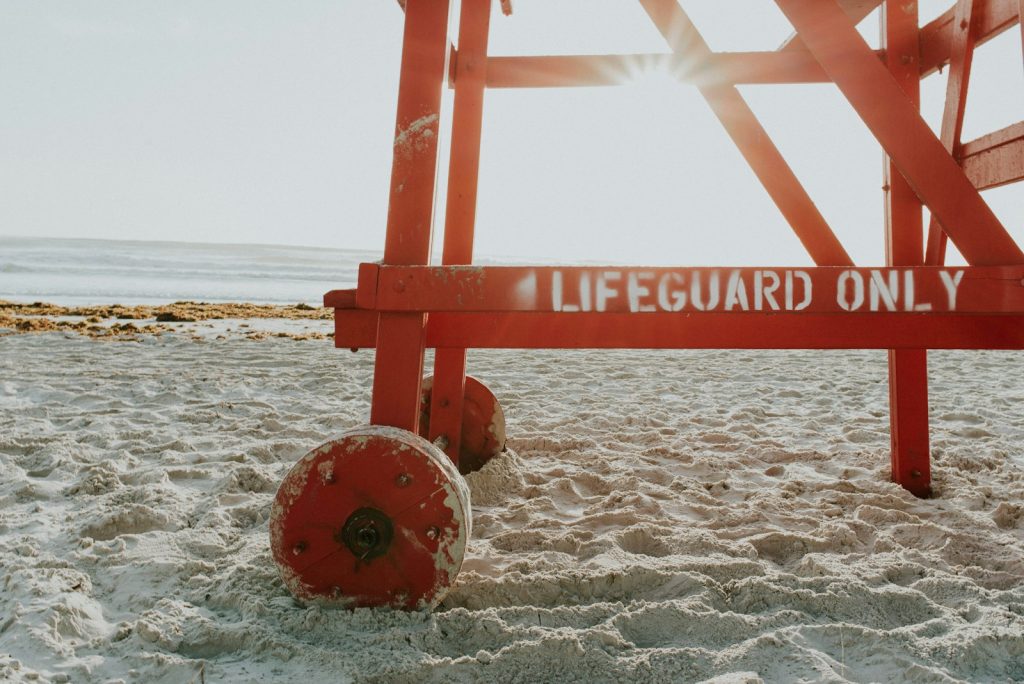
Once you’re at the beach, always talk to the on-duty lifeguards about rip currents and other surf conditions expected for the day.
For your safety, swim near a lifeguard and follow all their instructions and orders. Maintain a distance of at least 100 feet (30 meters) from piers and jetties, as these structures often harbor permanent rip currents. A jetty is a structure that extends from land to water.
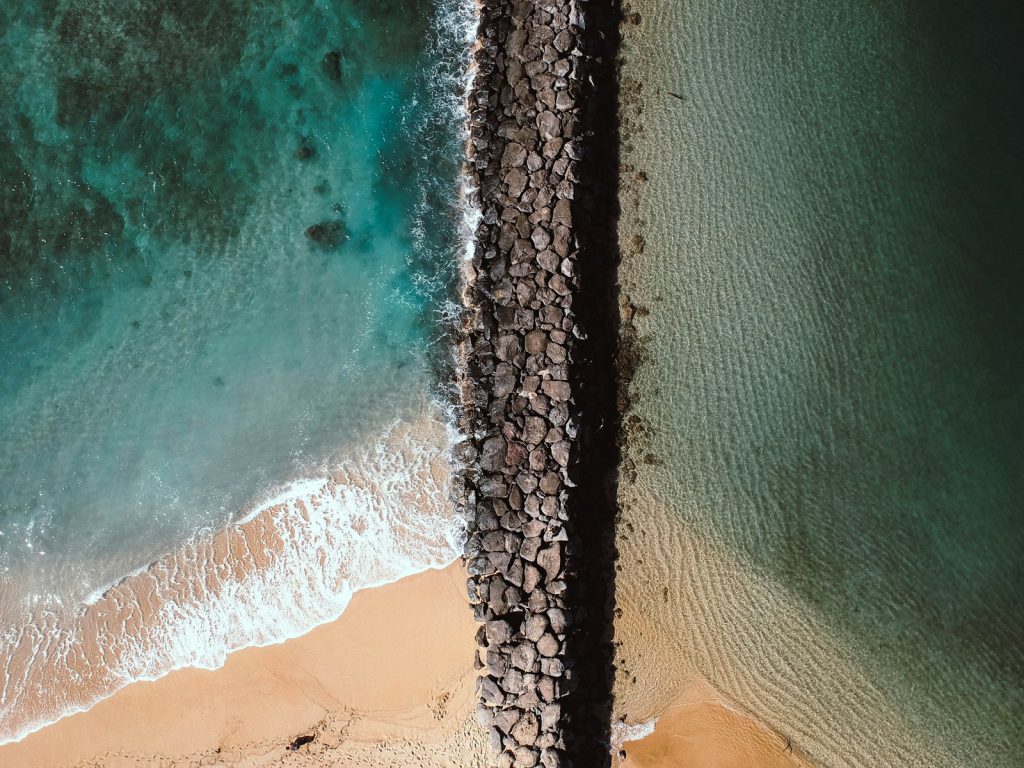
You should also look out for Rip Current danger flags shown below. Don’t go in the water if you see them.
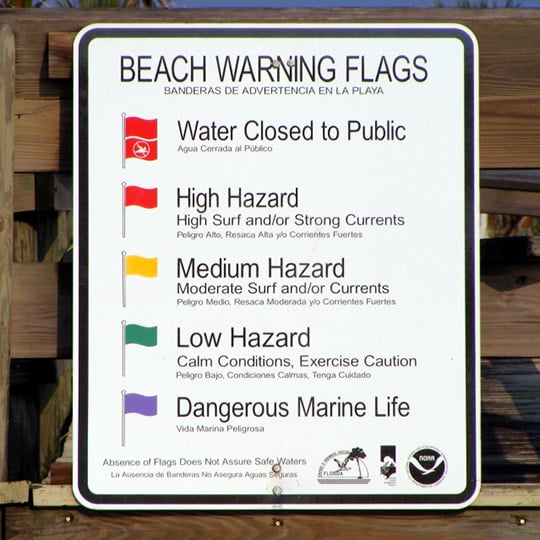
AND Never swim alone.
If You Get Caught In A Rip Current
If you ever find yourself caught in a rip current, the first thing to do is to stay relaxed. Rip currents won’t drag you under. They’ll just pull you away from the shore.
Remember. Stay calm–don’t fight the current.
If you can, try to swim out of the current along the shoreline and then back to the shore at an angle following the breaking waves. Once you’re free of the current, swim at an angle away from it towards the shore.
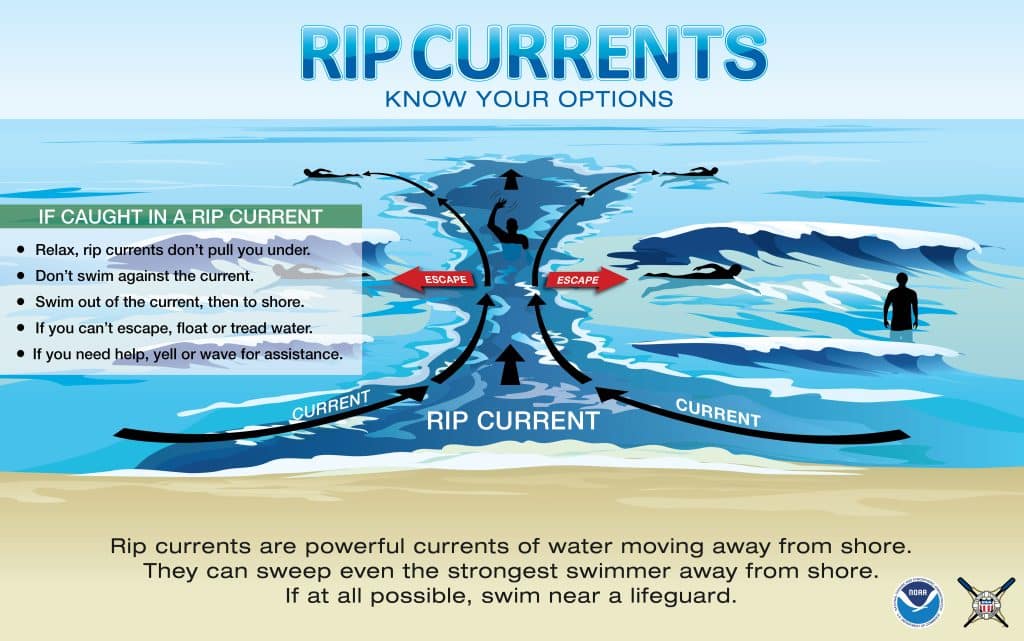
If you can’t get out of the current, just float or tread water while signaling and calling for help from the shore.
When the current starts to weaken, swim at an angle away from it and towards the shore.
If You See Someone Caught In A Rip Current
But what if you’re on shore and see someone caught in a rip current who needs help?
First, stay calm and take 10 seconds to think about what you can do.
Let the lifeguards or someone on the beach know. If there’s no lifeguard, you can shout instructions on how to get out of the water. But it’s best to call 911.
Find something that floats and try to get it to the person without entering the water.
If you must go into the water, always bring something that floats.
Remember, don’t put yourself in danger while trying to help someone else! Many people have died trying to save others from rip currents, especially those who aren’t properly trained and don’t have the right equipment.
Don’t forget to watch out for dangers and be mindful that the ocean can change fast. So, before going to the beach, always ensure you and your loved ones are safe.
